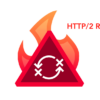Tripwire, a provider of security and compliance management solutions, has unveiled the results of a study comparing risk-based security management in the industrial sector to that of other industries.
The results of the survey, which was conducted in April 2013 with the Ponemon Institute, were unveiled at the American Petroleum Institute Cybersecurity Conference this week.
The study evaluated the attitudes of 1,320 respondents from IT security, IT operations, IT risk management, business operations, compliance/internal audit and enterprise risk management.
One hundred eight industrial sector respondents from the U.S. and U.K. participated in the industrial controls portion of the survey, Tripwire said.
“With the rapid escalation of critical infrastructure cybersecurity threats, industrial control organizations have a lot to do,” said Dwayne Melancon, chief technology officer for Tripwire. “It is encouraging that they are embracing a risk-based view of their operations at a higher than average rate, but this is not enough to protect them against determined attackers. It is imperative for this sector to get a handle on system hardening and configuration management practices to improve security and reliability.”
Some of the key findings include:
• 51 percent use formal risk assessments to identify security risks – five percent higher than the survey average.
• 86 percent believe minimizing noncompliance with laws and regulations helps meet certain business objectives – five percent higher than the survey average.
• 43 percent measure the reduction in unplanned system downtime to assess the effectiveness of cost-containment management efforts, differing from survey average of 38 percent.
• 52 percent listed the “flow of upstream communications” as one of the top three features most critical to the success of a risk-based security management approach – an eight percent increase over the survey average of 46 percent. According to Tripwire, the study revealed that the industrial sector is less effective than other industries in deploying risk management controls and communicating effectively about security.
Additional findings included:
• Just 40 percent have fully or partially deployed security configuration management, differing from the survey average of 49 percent.
• 75 percent have fully or partially deployed system hardening, five percent lower than the survey average of 80 percent.
• 69 percent said security communications are contained in only one department or line of business, differing from the survey average of 63 percent.
• 67 percent said security communications occur at too low a level, differing from the survey average of 62 percent.
• 56 percent listed an “openness to challenge assumptions” as one of the top three features most critical to the success of a risk-based security management approach. This was six percent lower than the survey average of 62 percent.
“Even though industrial sector organizations are actively considering security risks, they must also improve their willingness to elevate key risks to the executive level,” Melancon continued. “Security risks must be considered in context with overall business risk or the entire organization’s success will be in jeopardy.”
The results of the full survey are available here in PDF format.















